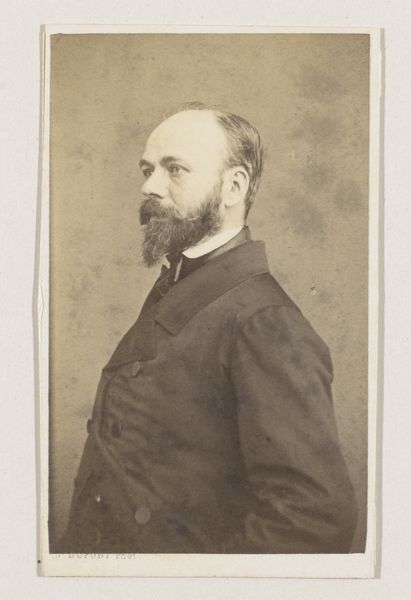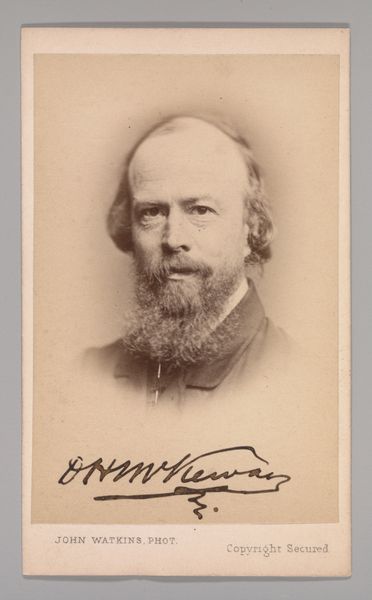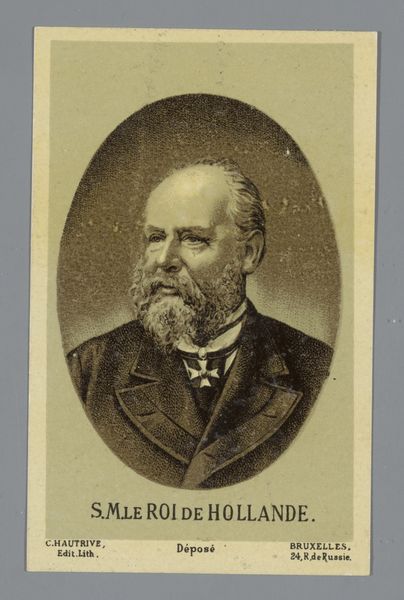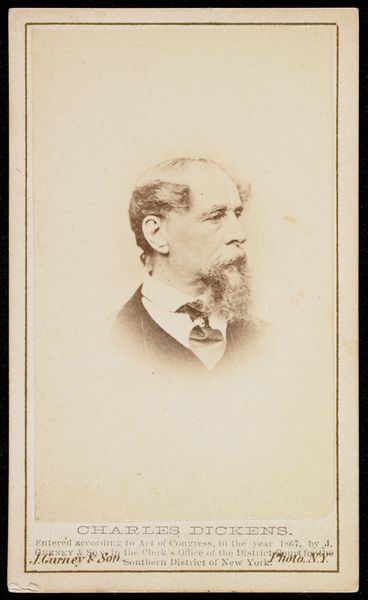![[George Edward ?] by John and Charles Watkins](/_next/image?url=https%3A%2F%2Fd2w8kbdekdi1gv.cloudfront.net%2FeyJidWNrZXQiOiAiYXJ0ZXJhLWltYWdlcy1idWNrZXQiLCAia2V5IjogImFydHdvcmtzLzM2MzEyYmQ2LTlhNzAtNDg5MS05MjlmLTJhNTVhZTVlNjM5Yy8zNjMxMmJkNi05YTcwLTQ4OTEtOTI5Zi0yYTU1YWU1ZTYzOWNfZnVsbC5qcGciLCAiZWRpdHMiOiB7InJlc2l6ZSI6IHsid2lkdGgiOiAxOTIwLCAiaGVpZ2h0IjogMTkyMCwgImZpdCI6ICJpbnNpZGUifX19&w=3840&q=75)
photography, gelatin-silver-print
#
portrait
#
photography
#
gelatin-silver-print
Dimensions: Approx. 10.2 x 6.3 cm (4 x 2 1/2 in.)
Copyright: Public Domain
Editor: This gelatin-silver print, a portrait titled '[George Edward ?]' by John and Charles Watkins, dates from the 1860s. It's striking how the subject's gaze avoids ours. What historical narratives do you see at play here? Curator: This averted gaze speaks volumes. In the context of 1860s portraiture, direct eye contact could be interpreted as challenging established social hierarchies. To what extent does the sitter’s posture embody Victorian ideals of masculinity and class? I think, in examining this photographic piece we have to examine whose gaze is validated and whose is not. Editor: So, the avoidance might reflect societal constraints and power dynamics of that period? Curator: Precisely. Early photography, while seemingly democratic, was often used to reinforce existing power structures. Reflect for a moment on how representation functions within social and political landscapes. Who was invited to sit for portraits? And whose stories are absent? Think about the power dynamics embedded in the act of looking and being looked at. Editor: It’s interesting to consider this in light of photographic portraits today. How much have things actually changed? Curator: A pertinent question! While access to photographic tools has widened, we still contend with issues of representation, particularly around race, gender, and class. Who controls the image, who is being portrayed, and what narratives are being perpetuated? What is revealed, what is concealed? The more you consider the politics behind it all, the more you start to see how historical patterns persist. Editor: This makes me look at the portrait completely differently! Thank you. Curator: Absolutely. And questioning the narratives behind images can help to understand not only historical subjects but also to foster a more critical perspective on visual media around us today.
Comments
No comments
Be the first to comment and join the conversation on the ultimate creative platform.













